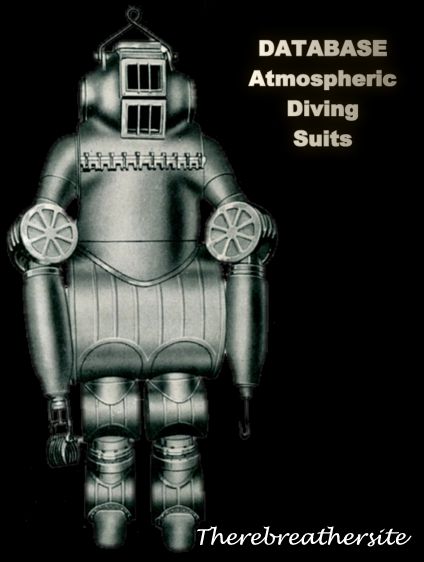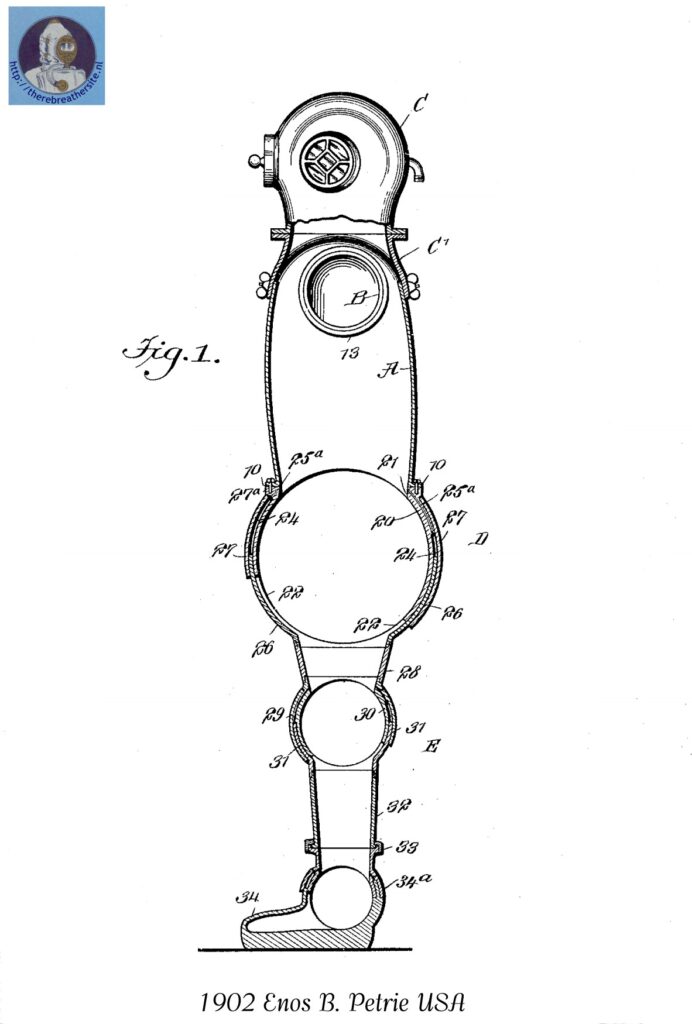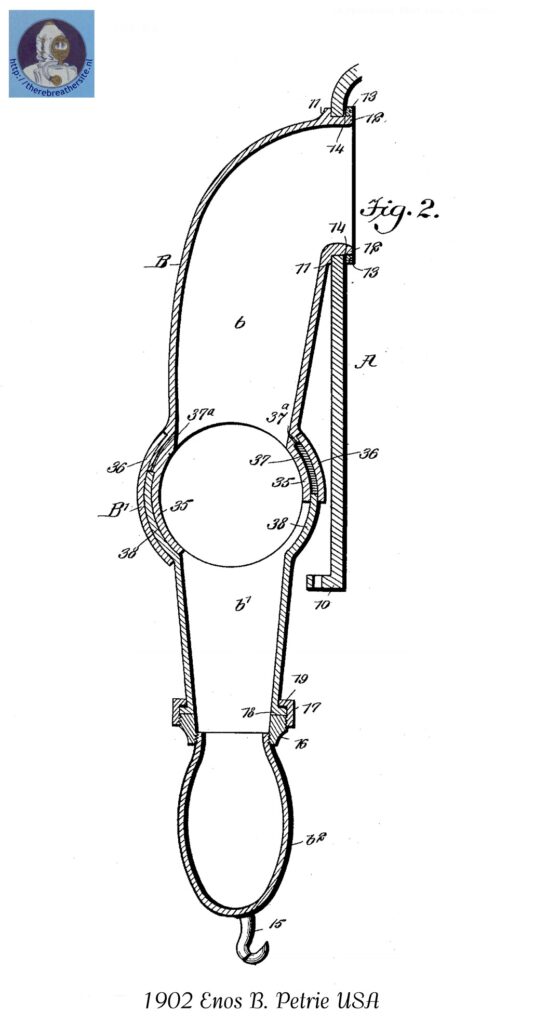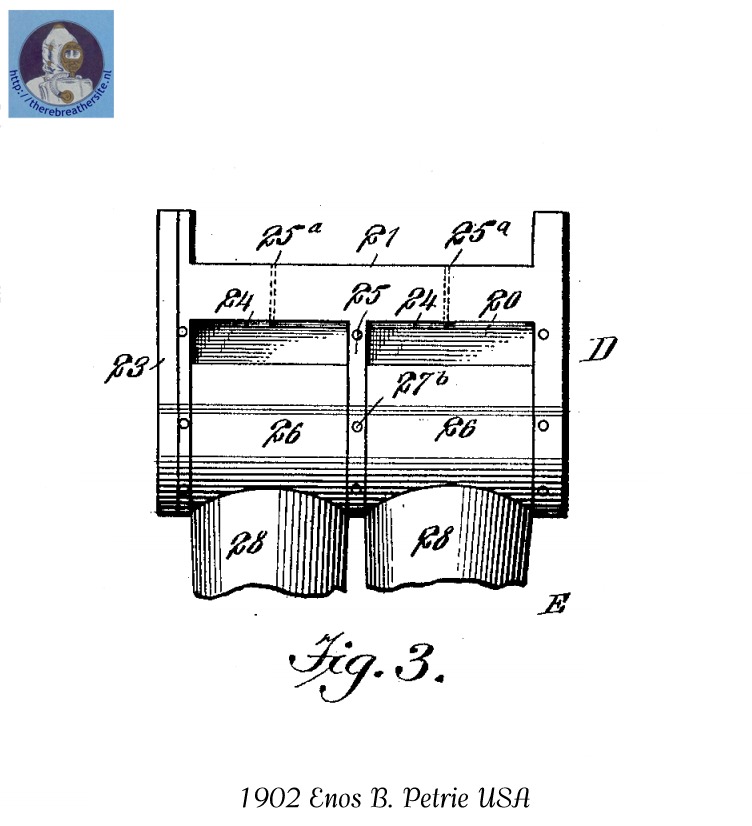
Petrie’s patent focuses on the freedom of movement of the joints. To this end, he provides the joint with a ventilation channel to the inside of the suit. He does not specifically address the issue of making the joints waterproof, and therefore writes that the suit should preferably be lined with a rubber suit.

The invention of Enos Petrie relates to an improvement in diving apparatus, particularly such apparatus as is employed for deep-sea diving, and to so construct the apparatus that it will withstand the pressure of deep water and yet may be worn with comparative comfort.
A further purpose of the invention is to so construct the diving apparatus, armor, or suit that a perfectly-articulating water and air tight joint is provided at the connection of the hip, body, and leg sections and the knee, ankle, and elbow sections or wherever movement of the body or limbs is necessary or desirable, the movement attainable being in any necessary direction, thus affording to a diver in a heavy suit the greatest freedom of action.
1. A diving apparatus having articulated sections for the reception of the jointed portions of the body, which sections consist of inner and outer shells connected with one main section of the apparatus, and extensions from an opposing main section of the apparatus, having movement in a circular direction between the inner and outer shells, as described.
2. A diving apparatus having articulated sections for the reception of the jointed portions of the body, which sections consist of inner and outer connected shells attached to one main section of the apparatus, the inner shell having recesses in its outer face and vents leading from the recesses to the interior of the apparatus, and extensions from the adjoining main section of the apparatus,
which extensions have sliding movement in the said recesses and between said shells, as described.
3. In a diving apparatus, the combination, with main sections of the apparatus, of an articulated connection between said main sections, the said connection comprising inner and outer connected shells, semicircular in cross-section and attached to one main section of the apparatus, the inner shell having recesses in its outer face, which recesses are provided with air-vents leading to the interior of the apparatus, and curved extensions from the second main section of the apparatus, fitted to the recesses in the inner shell and mounted to slide therein between the two shells, as described.
4. In a diving apparatus, the combination with the body, leg, foot and arm sections, of a cylindrical articulated section connecting the body and leg sections of the apparatus,
articulated cylindrical sections located at the knee portions of the leg-sections, the ankle portions of the foot-sections and between the shoulder and forearm portions of the arm-sections of the apparatus, the said cylindrical articulated connections permitting the body to move at said parts freely backward and forward, and horizontally-operating articulated connections above the main ankle-joints and at the wrist portions of the apparatus, whereby the mitten and foot portions of the apparatus may be laterally or horizontally moved around the parts with which they are connected, as described.



Therebreathersite was founded by Jan Willem Bech in 1999. After a diving career of many years, he decided to start technical diving in 1999. He immediately noticed that at that time there was almost no website that contained the history of closed breathing systems. The start for the website led to a huge collection that offered about 1,300 pages of information until 2019. In 2019, a fresh start was made with the website now freely available online for everyone. Therebreathersite is a source of information for divers, researchers, technicians and students. I hope you enjoy browsing the content!
